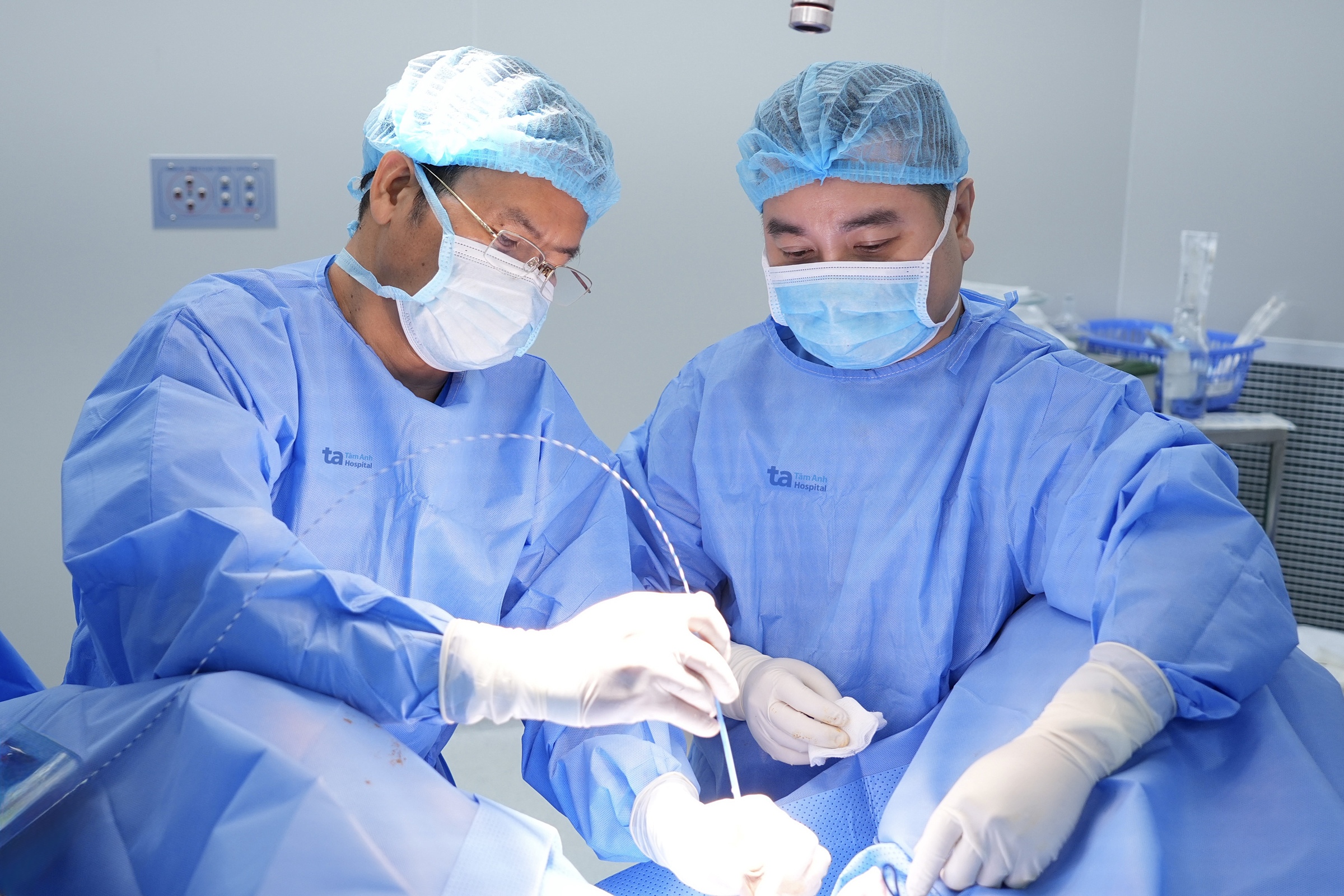Doctor Nguyen Ngoc Tan, from the Department of Urology and Andrology at Tam Anh General Hospital Hanoi, explained that Vinh's congenital phimosis created an environment for bacterial growth, leading to inflammation. His diabetes further compromised his immune system, increasing his susceptibility to infections and affecting the healing process. The recurring inflammation caused thick scar tissue, narrowing his urethra and obstructing urine flow.
Doctors recommended urethrotomy and meatotomy to treat the condition. The surgical team inserted a small, rigid guidewire through the narrowed urethra, followed by a plastic stent. They then widened the urethral opening and incised the scarred sections of the urethra to reconstruct and restore normal urine flow.
 |
Professor Tran Van Hinh (left) and Doctor Nguyen Ngoc Tan (right) placing a urethral stent for Vinh. Photo: Tam Anh General Hospital |
Professor Tran Van Hinh (left) and Doctor Nguyen Ngoc Tan (right) placing a urethral stent for Vinh. Photo: Tam Anh General Hospital
The 30-minute surgery was successful, restoring normal urination. Vinh was discharged after three days. The stent remained in place for over two weeks to allow the new urethra to stabilize. For three months post-surgery, he underwent periodic urethral dilation to reduce the risk of re-stricture. Vinh's health is now stable, the stent has been removed, and he no longer experiences urinary retention.
According to Doctor Tan, approximately 96% of newborn boys have phimosis, which mostly resolves naturally as they grow. If it persists beyond the age of 5, medical evaluation and timely treatment are necessary to avoid serious complications. Prolonged phimosis can lead to persistent inflammation, urethral stricture, difficulty urinating, urinary tract infections, and even an increased risk of penile cancer.
Anh Kiet
*The patient's name has been changed












